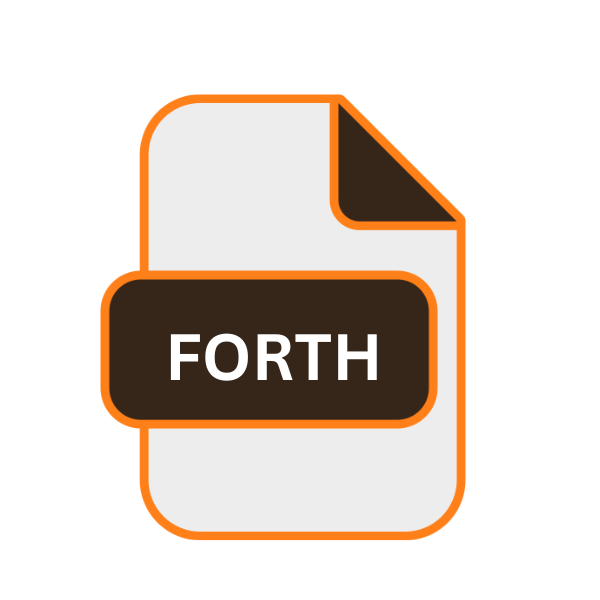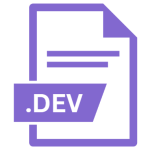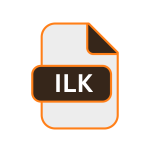.FORTH File Extension

Forth Language File
| Developer | N/A |
| Popularity | |
| Category | Developer Files |
| Format | .FORTH |
| Cross Platform | Update Soon |
What is an FORTH file?
The .FORTH file extension is associated with the Forth programming language, a stack-based, extensible language known for its efficiency and flexibility.
Forth is used in a variety of applications, from embedded systems to complex computing tasks. A .FORTH file typically contains source code written in the Forth language, characterized by its use of a stack for parameter passing and control flow.
More Information.
Forth was initially designed for controlling radio telescopes at the National Radio Astronomy Observatory (NRAO) in the United States.
Its design emphasized direct hardware manipulation and efficient execution, making it ideal for the resource-constrained environments of the time.
Over the years, Forth has found applications in various domains, including scientific research, industrial control, and even video game development.
The language’s portability and minimalistic syntax have kept it relevant, particularly in embedded systems and real-time applications.
Origin Of This File.
The .FORTH file extension, like the language it represents, traces its roots back to the late 1960s and early 1970s. Forth was developed by Charles H.
Moore sought to create a language that could provide both the low-level control of assembly language and the high-level abstraction of more conventional programming languages.
The name “Forth” was chosen to signify its intended role as the fourth generation of computer languages, though the name had to be shortened due to early file-naming restrictions.
File Structure Technical Specification.
A .FORTH file is a text file containing Forth programming language code, structured around modular “words” separated by whitespace. Comments, enclosed in parentheses ( ... ), are ignored by the interpreter. The language’s stack-based operations involve pushing and popping values on a stack.
Control structures include loops (DO ... LOOP) and conditionals (IF ... ELSE ... THEN). Users can define new words with : (colon) and ; (semicolon), enhancing extensibility.
This simple, efficient structure allows for rapid testing, debugging, and customization, making Forth ideal for specialized applications.
How to Convert the File?
Converting a .FORTH file to another format typically involves translating the Forth code into another programming language or converting it into a binary executable. Here are some general methods and steps for this process:
1. Manual Conversion:
- Understand the Forth Code: Thoroughly analyze the Forth program, including its control structures, stack operations, and custom words.
- Select Target Language: Choose the programming language you want to convert the Forth code into, such as C, Python, or Java.
- Translate Syntax and Logic: Rewrite the Forth code manually in the target language, converting Forth’s stack operations into appropriate constructs in the new language. Focus on maintaining the logic and flow of the original program.
- Test Thoroughly: Execute the translated code and conduct rigorous testing to ensure it behaves identically to the original Forth code.
2. Automated Tools and Interpreters:
While automated tools for direct conversion are rare due to Forth’s unique stack-based nature, some tools and interpreters can assist in the process:
- Forth to C Translators: Some Forth interpreters can output C code as an intermediate step. Tools like
ciforthmay be useful. - Gforth: This popular Forth interpreter can compile Forth code to a binary executable. Using specific Gforth commands, you can compile and execute the Forth code, resulting in a binary file.
3. Using Forth Interpreters with Foreign Language Interfaces:
- Forth Systems with C Interfaces: Some Forth systems, such as SwiftForth, provide interfaces to C, allowing the integration of Forth code into larger C projects. This facilitates calling Forth functions from C programs and vice versa.
- Forth-to-Python Projects: Some libraries allow running Forth within Python, enabling partial conversion or integration. For example, Py4th can help integrate Forth and Python code.
Advantages And Disadvantages.
Advantage:
- Efficiency: Forth is known for its speed and low memory footprint.
- Extensibility: The language allows users to define new words, making it highly customizable.
- Portability: Forth systems can be easily ported to new hardware platforms.
- Interactive Development: Forth’s interactive nature allows for immediate testing and debugging of code.
Disadvantages:
- Steep Learning Curve: Forth’s syntax and stack-based nature can be challenging for beginners.
- Readability: Code can become difficult to read and maintain, especially for those unfamiliar with Forth conventions.
- Limited Mainstream Use: Forth is not as widely used or supported as other programming languages, leading to fewer resources and community support.
How to Open FORTH?
Open In Windows
To open and edit .FORTH files on a Windows system, you can use several tools:
- Win32Forth: A popular Forth implementation for Windows that provides a comprehensive environment for writing and executing Forth code.
- Gforth: A widely-used, portable Forth interpreter that runs on multiple platforms, including Windows. It can be downloaded and installed from its official website or via package managers like Cygwin.
- Notepad++: A powerful text editor that supports syntax highlighting for multiple programming languages. While it doesn’t specifically support Forth, it can be used for basic editing of .FORTH files.
Open In Linux
Linux users have a variety of options for opening and working with .FORTH files:
- Gforth: Available in most Linux distributions’ repositories, it can be installed using the package manager (e.g.,
sudo apt-get install gforthon Debian-based systems). Gforth provides an interactive environment for running Forth code. - Vim or Emacs: Both are powerful text editors that can be configured to provide syntax highlighting and other features for Forth. Vim can be enhanced with plugins like vim-forth, and Emacs with modes like forth-mode.
- SP-Forth: Another Forth implementation that runs on Linux, offering a different set of features and capabilities.
Open In MAC
macOS users can utilize the following tools to open and edit .FORTH files:
- Gforth: Easily installed via Homebrew (
brew install gforth), Gforth provides a robust environment for developing in Forth on macOS. - TextEdit: For basic text editing, though it lacks advanced features specific to Forth programming.
- BBEdit: A more advanced text editor that can handle Forth code with appropriate configuration and offers syntax highlighting and other features.
Open In Android
To work with .FORTH files on Android devices, you can use the following options:
- Termux: A powerful terminal emulator for Android that allows you to install and run Linux applications. You can install Gforth within Termux (
pkg install gforth) and use it to write and execute Forth code. - DroidEdit: A versatile text editor for Android that supports multiple programming languages, including the ability to edit Forth code files.
Open In IOS
For iOS devices, options are more limited, but the following tools can be used:
- iSH Shell: A Linux shell for iOS that allows running a Linux environment on your iOS device. You can install Gforth within iSH to run Forth code.
- Textastic: A code editor for iOS that supports syntax highlighting for multiple languages, though it might require custom configuration to fully support Forth.
Open in Others
For other platforms, such as embedded systems or specialized hardware, consider the following approaches:
- Custom Forth Interpreters: Many embedded systems have specific Forth interpreters or compilers tailored to their architecture. These interpreters are optimized for the constraints and capabilities of the specific hardware.
- Online Forth Environments: Web-based Forth interpreters and development environments allow you to write and test Forth code without needing to install any software locally. Websites like Try Forth Online offer interactive Forth sessions directly in the browser.
- Retro Computers: Some retro computing enthusiasts use Forth on older platforms like the Commodore 64 or Apple II. Emulators for these systems, combined with vintage Forth implementations, can run .FORTH files.













